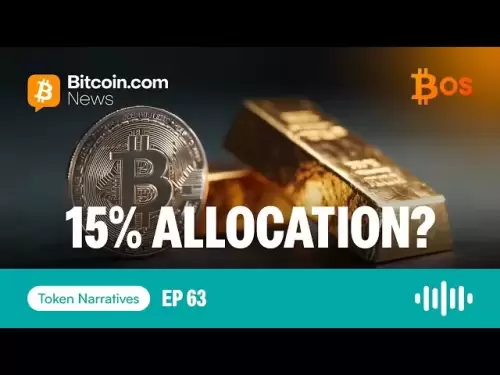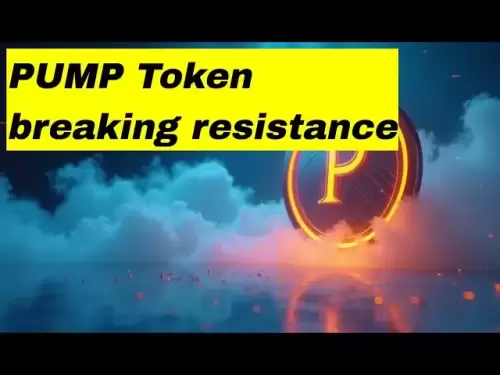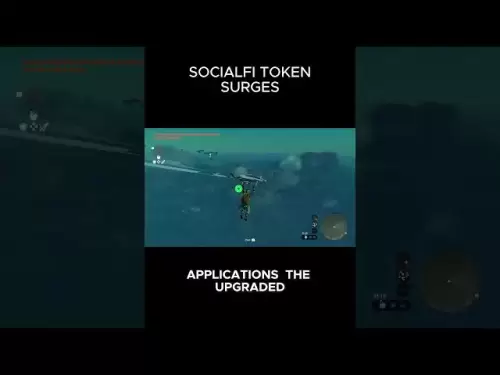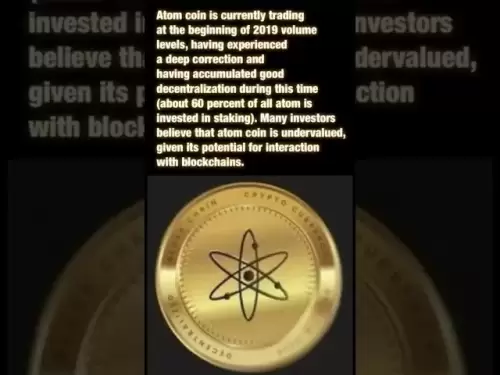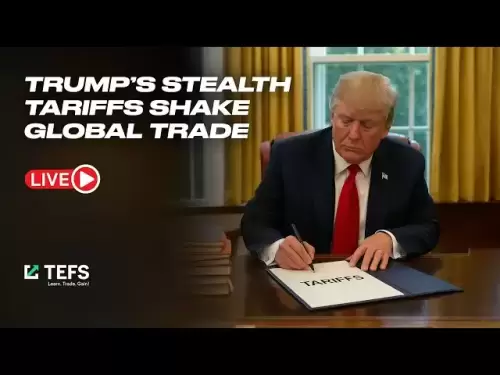-
 Bitcoin
Bitcoin $115200
-2.68% -
 Ethereum
Ethereum $3601
-5.16% -
 XRP
XRP $3.035
-2.96% -
 Tether USDt
Tether USDt $0.9997
-0.04% -
 BNB
BNB $764.5
-5.43% -
 Solana
Solana $168.1
-5.92% -
 USDC
USDC $0.9998
-0.02% -
 Dogecoin
Dogecoin $0.2090
-4.80% -
 TRON
TRON $0.3272
-0.49% -
 Cardano
Cardano $0.7306
-5.00% -
 Hyperliquid
Hyperliquid $39.16
-12.22% -
 Stellar
Stellar $0.3967
-4.96% -
 Sui
Sui $3.566
-5.95% -
 Chainlink
Chainlink $16.55
-6.57% -
 Bitcoin Cash
Bitcoin Cash $552.3
-3.90% -
 Hedera
Hedera $0.2516
-4.69% -
 Avalanche
Avalanche $21.99
-5.75% -
 Toncoin
Toncoin $3.621
-0.28% -
 Ethena USDe
Ethena USDe $1.000
-0.03% -
 UNUS SED LEO
UNUS SED LEO $8.951
0.02% -
 Litecoin
Litecoin $105.9
-3.59% -
 Shiba Inu
Shiba Inu $0.00001232
-5.00% -
 Polkadot
Polkadot $3.640
-5.55% -
 Uniswap
Uniswap $9.048
-7.03% -
 Monero
Monero $301.8
-1.51% -
 Dai
Dai $0.9999
-0.01% -
 Bitget Token
Bitget Token $4.334
-3.66% -
 Pepe
Pepe $0.00001064
-6.17% -
 Cronos
Cronos $0.1367
-5.78% -
 Aave
Aave $259.2
-4.59%
How to verify the authenticity of NFTs? What are some tips to avoid buying fakes?
To verify NFT authenticity, check the blockchain and smart contract, examine metadata and provenance, use third-party services, and research the creator's reputation.
May 16, 2025 at 08:01 pm
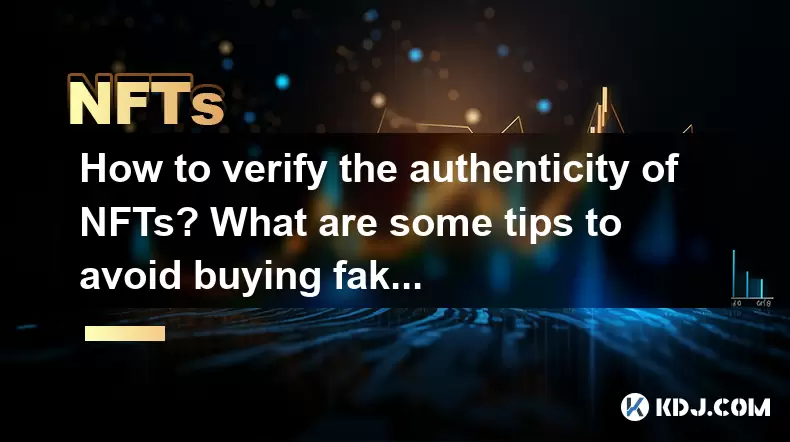
How to Verify the Authenticity of NFTs? What Are Some Tips to Avoid Buying Fakes?
In the rapidly evolving world of digital assets, non-fungible tokens (NFTs) have become a significant part of the cryptocurrency ecosystem. As with any valuable commodity, the market for NFTs has seen its share of counterfeit products. Verifying the authenticity of NFTs is crucial to protect yourself from fraud and ensure that you are investing in legitimate digital assets. This article will guide you through the process of verifying NFT authenticity and provide tips to avoid buying fakes.
Understanding NFTs and Their Authenticity
Before diving into verification methods, it's important to understand what NFTs are and why authenticity matters. NFTs are unique digital assets that represent ownership or proof of authenticity of a specific item or piece of content, typically stored on a blockchain. The authenticity of an NFT is tied to its unique token ID and the integrity of the blockchain it resides on. Ensuring that an NFT is genuine involves verifying its token ID, the blockchain it's on, and the metadata associated with it.
Checking the Blockchain and Smart Contract
One of the primary ways to verify the authenticity of an NFT is by checking the blockchain and smart contract. Each NFT is minted on a blockchain, such as Ethereum, and is associated with a smart contract that governs its behavior and ownership.
- Access the blockchain explorer: Use a blockchain explorer like Etherscan for Ethereum-based NFTs. Enter the NFT's contract address to view its details.
- Verify the smart contract: Ensure the smart contract address matches the one provided by the NFT's creator or marketplace. Look for any warnings or discrepancies.
- Check the token ID: Each NFT has a unique token ID. Confirm that the token ID matches the one displayed on the marketplace or the creator's website.
Examining Metadata and Provenance
Another critical aspect of verifying NFT authenticity is examining the metadata and provenance. Metadata provides information about the NFT, such as its creator, creation date, and any associated files or links. Provenance, on the other hand, tracks the history of ownership and transfers of the NFT.
- Review the metadata: Access the NFT's metadata through the blockchain explorer or the marketplace. Ensure it contains accurate and complete information about the asset.
- Trace the provenance: Use tools like OpenSea or Rarible to view the NFT's transaction history. A clear and verifiable history of ownership increases the likelihood of authenticity.
Utilizing Third-Party Verification Services
To further ensure the authenticity of an NFT, you can utilize third-party verification services. These services specialize in verifying the legitimacy of digital assets and can provide an additional layer of security.
- Research reputable services: Look for well-known verification services like Verisart or Truepic, which offer NFT authentication.
- Submit the NFT for verification: Follow the service's process to submit your NFT for review. They will check the blockchain data, metadata, and provenance to confirm its authenticity.
- Review the verification report: Once the service completes its review, carefully examine the report for any red flags or issues.
Verifying the Creator's Identity and Reputation
The authenticity of an NFT is also closely tied to the creator's identity and reputation. A reputable creator is less likely to be associated with counterfeit NFTs.
- Research the creator: Look up the creator's profile on social media, their website, or other platforms where they are active. Check for any red flags or negative reviews.
- Verify the creator's identity: Some platforms require creators to go through identity verification processes. Confirm that the creator has completed such verifications.
- Check for official partnerships: Reputable creators often partner with established platforms or brands. Look for any official collaborations that can validate the creator's legitimacy.
Tips to Avoid Buying Fake NFTs
While verifying the authenticity of an NFT is crucial, there are also several tips you can follow to avoid buying fakes in the first place.
- Buy from reputable marketplaces: Stick to well-known and trusted NFT marketplaces like OpenSea, Rarible, or Foundation. These platforms have measures in place to prevent counterfeit listings.
- Be wary of too-good-to-be-true deals: If an NFT is priced significantly lower than its market value, it could be a red flag. Always research the market value before making a purchase.
- Use secure payment methods: Opt for payment methods that offer buyer protection, such as credit cards or platforms with built-in escrow services.
- Educate yourself: Stay informed about common scams and tactics used by fraudsters in the NFT space. Knowledge is your best defense against fakes.
Frequently Asked Questions
Q: Can I verify the authenticity of an NFT after I've already purchased it?
A: Yes, you can verify the authenticity of an NFT after purchase by following the steps outlined in this article. Use blockchain explorers, check metadata and provenance, and consider using third-party verification services to confirm its legitimacy.
Q: Are there any tools that can automatically detect fake NFTs?
A: While there are no foolproof tools that can automatically detect fake NFTs, some platforms and services offer features that can help identify potential red flags. For example, OpenSea's "Suspicious Activity" feature alerts users to potential issues with an NFT's history.
Q: What should I do if I discover that an NFT I purchased is fake?
A: If you discover that an NFT you purchased is fake, contact the marketplace where you bought it immediately. Many reputable platforms have policies in place to help resolve such issues, including refunds or compensation. Additionally, consider reporting the incident to relevant authorities or blockchain security organizations.
Q: How can I protect myself from future NFT scams?
A: To protect yourself from future NFT scams, continue to educate yourself about the latest trends and scams in the NFT space. Use reputable platforms, verify the authenticity of NFTs before purchasing, and always use secure payment methods. Staying vigilant and informed is key to avoiding scams.
Disclaimer:info@kdj.com
The information provided is not trading advice. kdj.com does not assume any responsibility for any investments made based on the information provided in this article. Cryptocurrencies are highly volatile and it is highly recommended that you invest with caution after thorough research!
If you believe that the content used on this website infringes your copyright, please contact us immediately (info@kdj.com) and we will delete it promptly.
- Bitcoin, Solana, and Altcoin Season: What's Hot and What's Not?
- 2025-08-02 07:10:12
- Toncoin, Rollblock, and the Token Offering Landscape: A New York Minute
- 2025-08-02 07:10:12
- Meme Coins: Long Term Earn and Hold Strategy
- 2025-08-02 06:30:12
- Ethereum, DEX Trading, and the $1 Trillion Milestone: A New Era?
- 2025-08-02 06:50:12
- Hong Kong's Stablecoin Scene: New Rules, Market Jitters, and Future Hopes
- 2025-08-02 06:35:46
- Dogecoin's Price Support Under Fire: Can It Fend Off Competitors?
- 2025-08-02 04:30:12
Related knowledge

Is it possible to get a refund on an NFT?
Jul 21,2025 at 08:35pm
Understanding NFT Transactions and RefundsWhen you purchase an NFT (Non-Fungible Token), the transaction is typically recorded on a blockchain, making...

What happens to NFTs when the owner dies?
Jul 22,2025 at 02:43pm
Legal Ownership and Digital AssetsWhen an individual owns NFTs, the question of what happens to these assets upon their death is a pressing one. NFTs ...

What are the tax implications of gifting an NFT?
Jul 19,2025 at 04:21am
Understanding the Basics of NFT GiftingGifting a Non-Fungible Token (NFT) involves transferring ownership from one individual to another without recei...

Can you trade NFTs on your phone?
Jul 18,2025 at 04:29am
Trading NFTs on Mobile DevicesYes, you can trade NFTs on your phone, and the process has become increasingly streamlined thanks to a variety of mobile...

How to find out about upcoming NFT mints?
Jul 18,2025 at 11:50am
Exploring NFT Minting OpportunitiesUnderstanding the landscape of upcoming NFT mints is crucial for collectors, investors, and creators who wish to st...

What is an allowlist or whitelist for an NFT mint?
Jul 20,2025 at 07:14pm
Understanding the Concept of an Allowlist for NFT MintingAn allowlist, also commonly referred to as a whitelist, is a mechanism used in the NFT mintin...

Is it possible to get a refund on an NFT?
Jul 21,2025 at 08:35pm
Understanding NFT Transactions and RefundsWhen you purchase an NFT (Non-Fungible Token), the transaction is typically recorded on a blockchain, making...

What happens to NFTs when the owner dies?
Jul 22,2025 at 02:43pm
Legal Ownership and Digital AssetsWhen an individual owns NFTs, the question of what happens to these assets upon their death is a pressing one. NFTs ...

What are the tax implications of gifting an NFT?
Jul 19,2025 at 04:21am
Understanding the Basics of NFT GiftingGifting a Non-Fungible Token (NFT) involves transferring ownership from one individual to another without recei...

Can you trade NFTs on your phone?
Jul 18,2025 at 04:29am
Trading NFTs on Mobile DevicesYes, you can trade NFTs on your phone, and the process has become increasingly streamlined thanks to a variety of mobile...

How to find out about upcoming NFT mints?
Jul 18,2025 at 11:50am
Exploring NFT Minting OpportunitiesUnderstanding the landscape of upcoming NFT mints is crucial for collectors, investors, and creators who wish to st...

What is an allowlist or whitelist for an NFT mint?
Jul 20,2025 at 07:14pm
Understanding the Concept of an Allowlist for NFT MintingAn allowlist, also commonly referred to as a whitelist, is a mechanism used in the NFT mintin...
See all articles





















